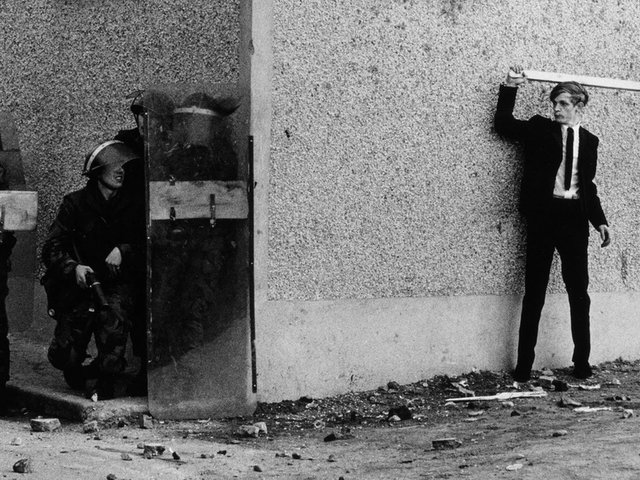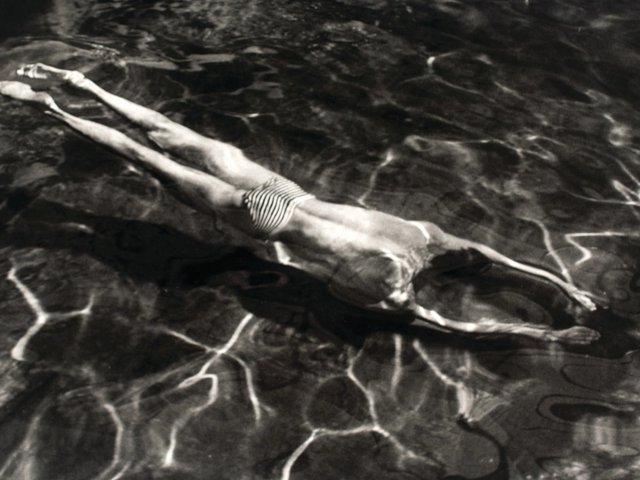Tates Britain and Modern have never discretely collected photography and have no a department or curator of photography per se.
The current exhibition “Cruel and tender” (until 7 September), dedicated wholly to photography at Tate Modern, and the creation of the Kramlich Curator of Video and New Media official, are emphases on the medium which reflect its widespread use by artists.
Since 1995, Tate has mounted regular displays of photography, featuring, for example, Hannah Collins, John Coplans, Cindy Sherman, or in the Turner Prize shows, with Craigie Horsfield, Steven Pippin, Wolfgang Tillmans, Richard Billingham.
At the opening of Tate Modern, in addition to the inclusion of photography within the thematic displays of the collections, there was the opportunity to display the gallery’s photographic acquisitions made during the 1990s, of works by, among others, Andreas Gursky, Thomas Struth, Cindy Sherman and Nan Goldin, and also a special display taking up the whole of Level 4, entitled “Between cinema and a hard place”, which focussed on large scale installation, new media-based works, and photography within the Tate collection, by Christian Boltanski, Stan Douglas, James Coleman, Gabriel Orozco and Jeff Wall.
The first photographic work to be purchased by the Tate was “Balls–the evening before the morning after—drinking sculpture”, 1972, by Gilbert and George. Since then there have been regular acquisitions and gifts. During the 1970s the main area of interest was the use of photography by conceptual artists; since the 1990s this has become more heterodox as more artists, of various tendencies, have worked in photography, with purchases from, for example, Hiroshi Sugimoto, Paul Graham and Thomas Struth.
Over the past three years Tate has acquired nearly 150 works by artists including Hannah Starkey, Seamus Nicolson, Sarah Jones, Jason Evans, Anna Gaskell, Rut Blees Luxemburg, to well known British artists such as Richard Billingham, Sarah Lucas and Gillian Wearing, Sam Taylor-Wood, Catherine Yass, to well established international figures such as Raghubir Singh, Uta Barth, Sophie Calle, Stan Douglas, Hiroshi Sugimoto, Candida Höfer, Roi Kuper, Gilad Ophir.
Additionally, Tate has acquired works to strengthen its already strong holdings in conceptual and feminist use of photography including important works by Helen Chadwick, Margaret Harrison, Kay Hunt and Mary Kelly, Ian Breakwell, Keith Arnatt and Vito Acconci.
As Emma Dexter, Senior Curator, Tate Modern, points out, Tate does not aim to rival national or historical collections of photography at the Victoria and Albert Museum and the National Museum in Bradford, each of which handles photography in a special way. She says, “The Victoria and Albert Museum provides the context of a decorative and applied arts museum; the National Museum in Bradford provides a more industrial and technical context alongside the allied arts of film and television, while the Tate provides the context of a heterodox fine art collection.”
She also notes that, “As well as any differences of emphasis in the respective photographic holdings, each of the national collecting institutions obviously provides a different context for photographic works.”
The photographic works in Tate are neither a study collection nor a technical collection; rather they are acquired with display purposes in mind. On the other hand, Tate does have many photographs as a part of its archive of material relating to artists’ lives. Here there are many collections relating to Eileen Agar, Vanessa Bell, Paul Nash and John Piper.
As Tate does not have departments or curators dedicated to a particular medium, so there are numerous curators, at the various Tate sites, who have a particular interest in, and knowledge of the field, both in terms of contemporary practice and with reference to earlier photography. These curators also have interests and specialisms in other areas and this cross-over of interest accounts for the way photography has been so fully integrated into Tate’s displays.



